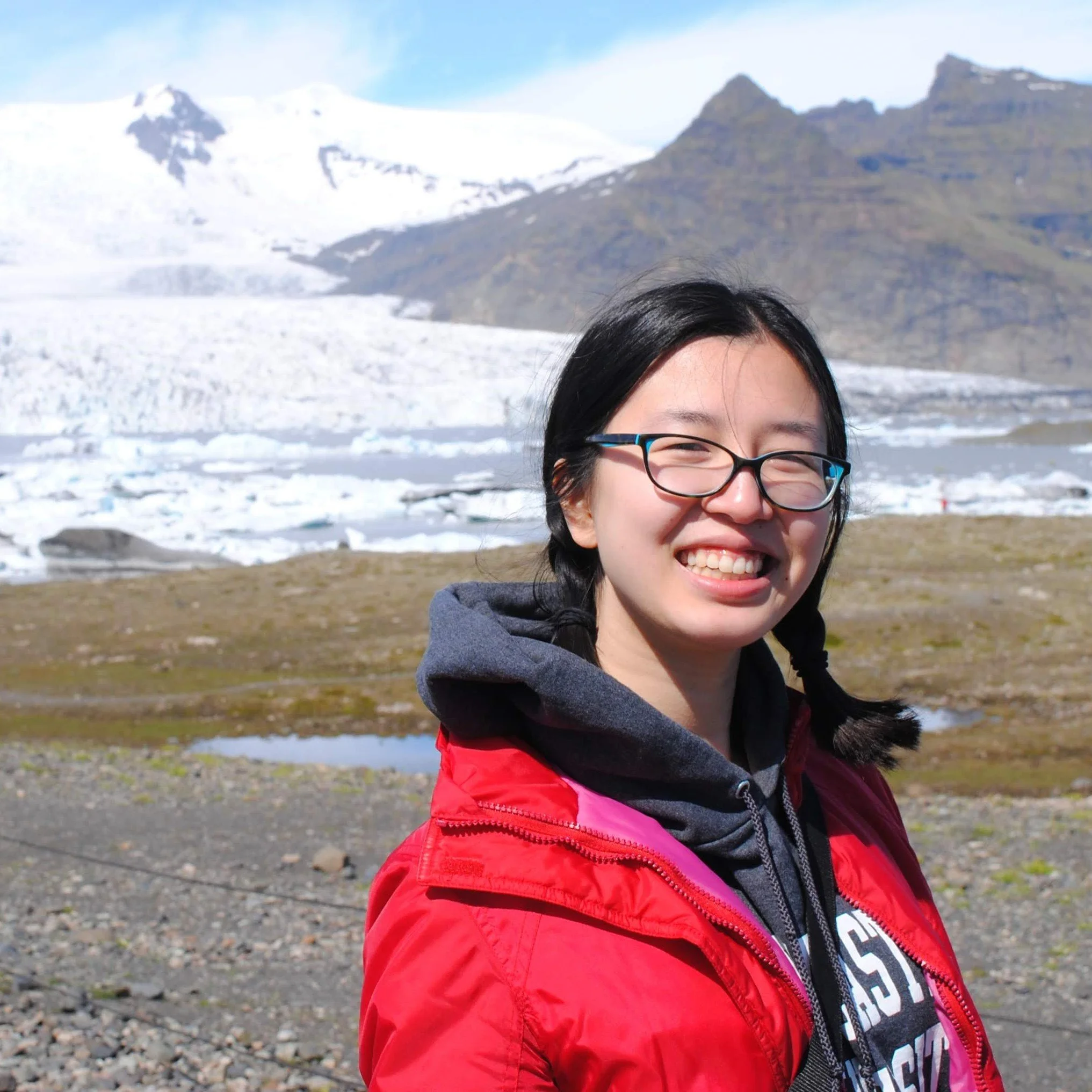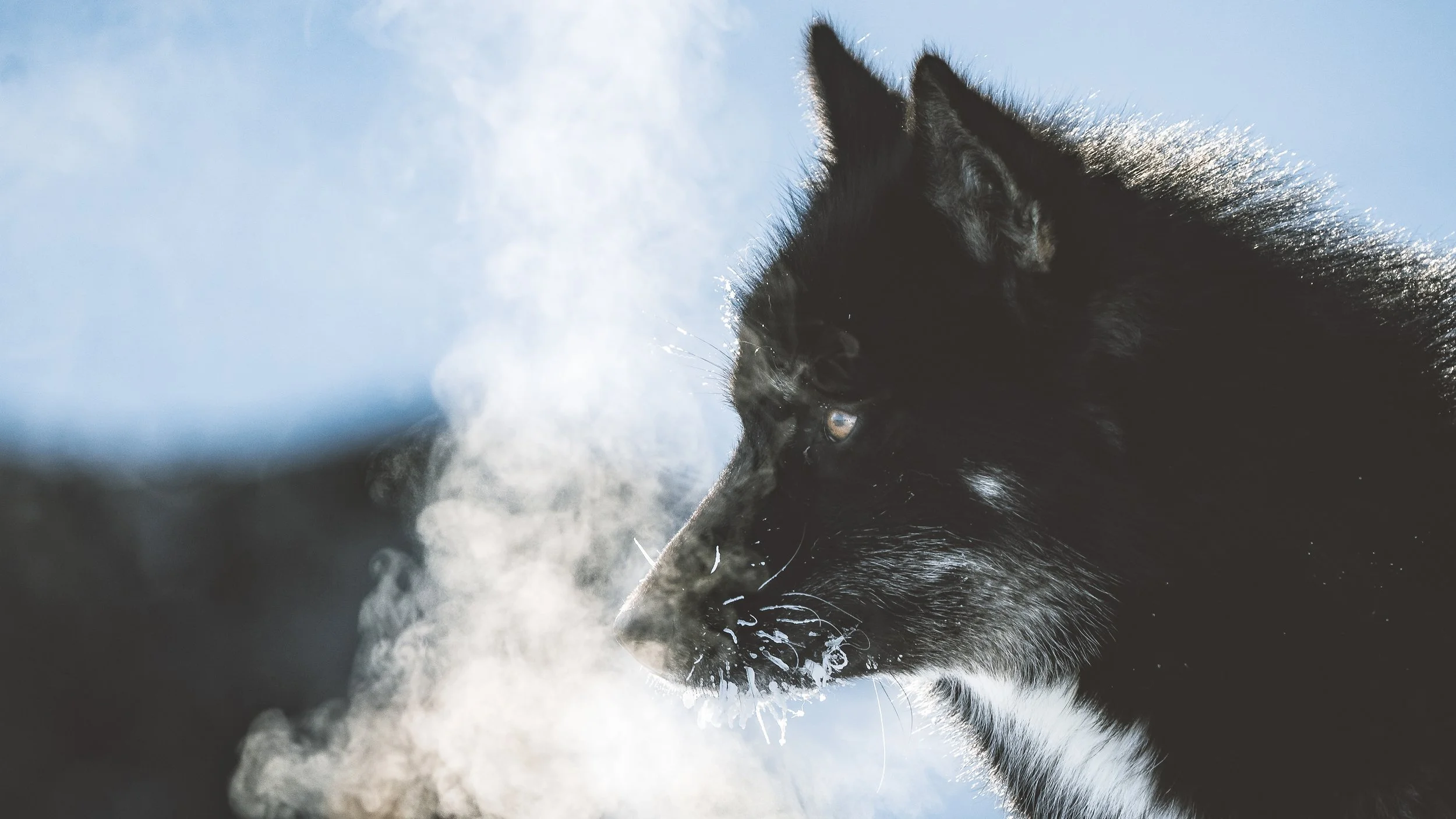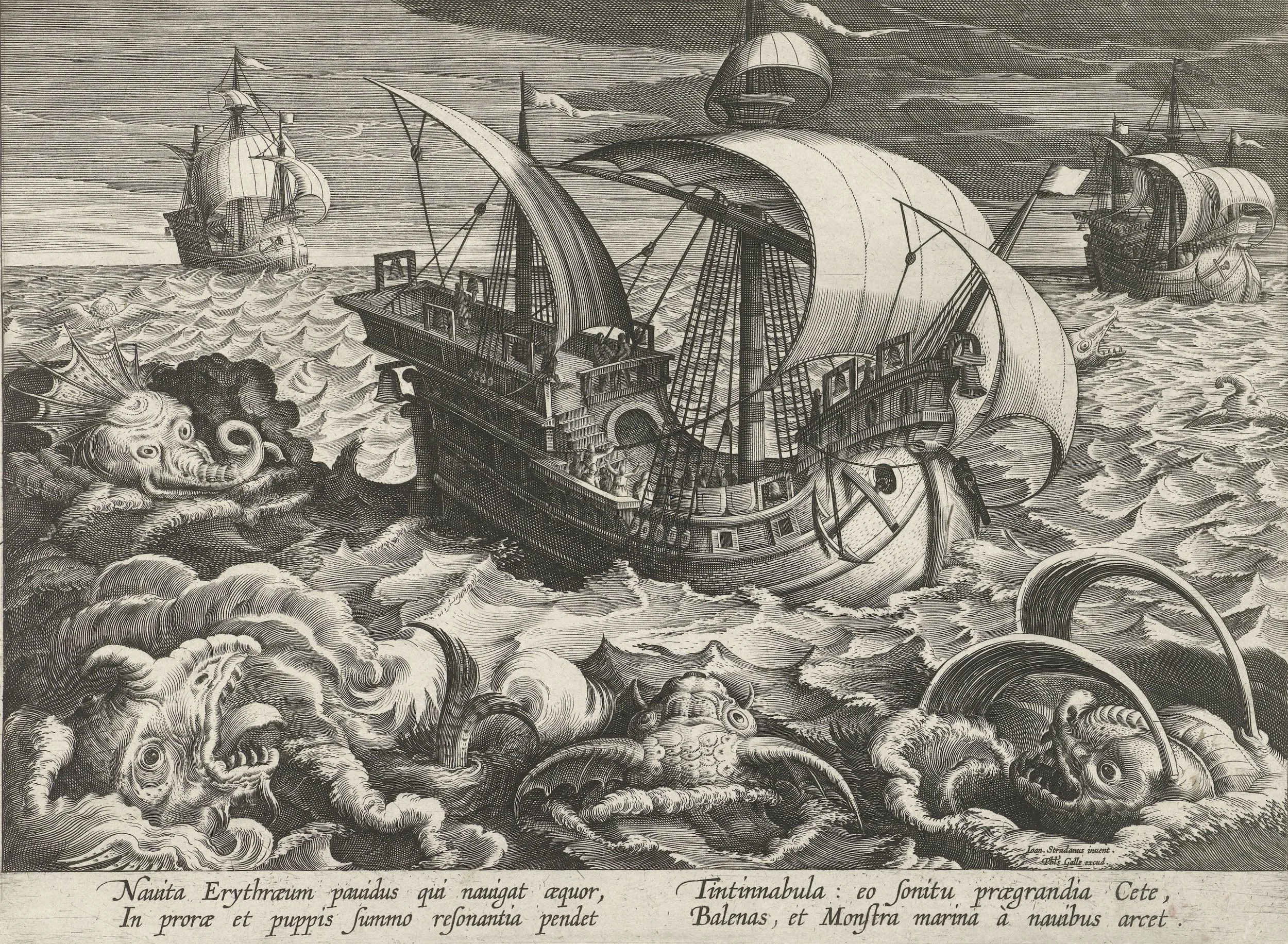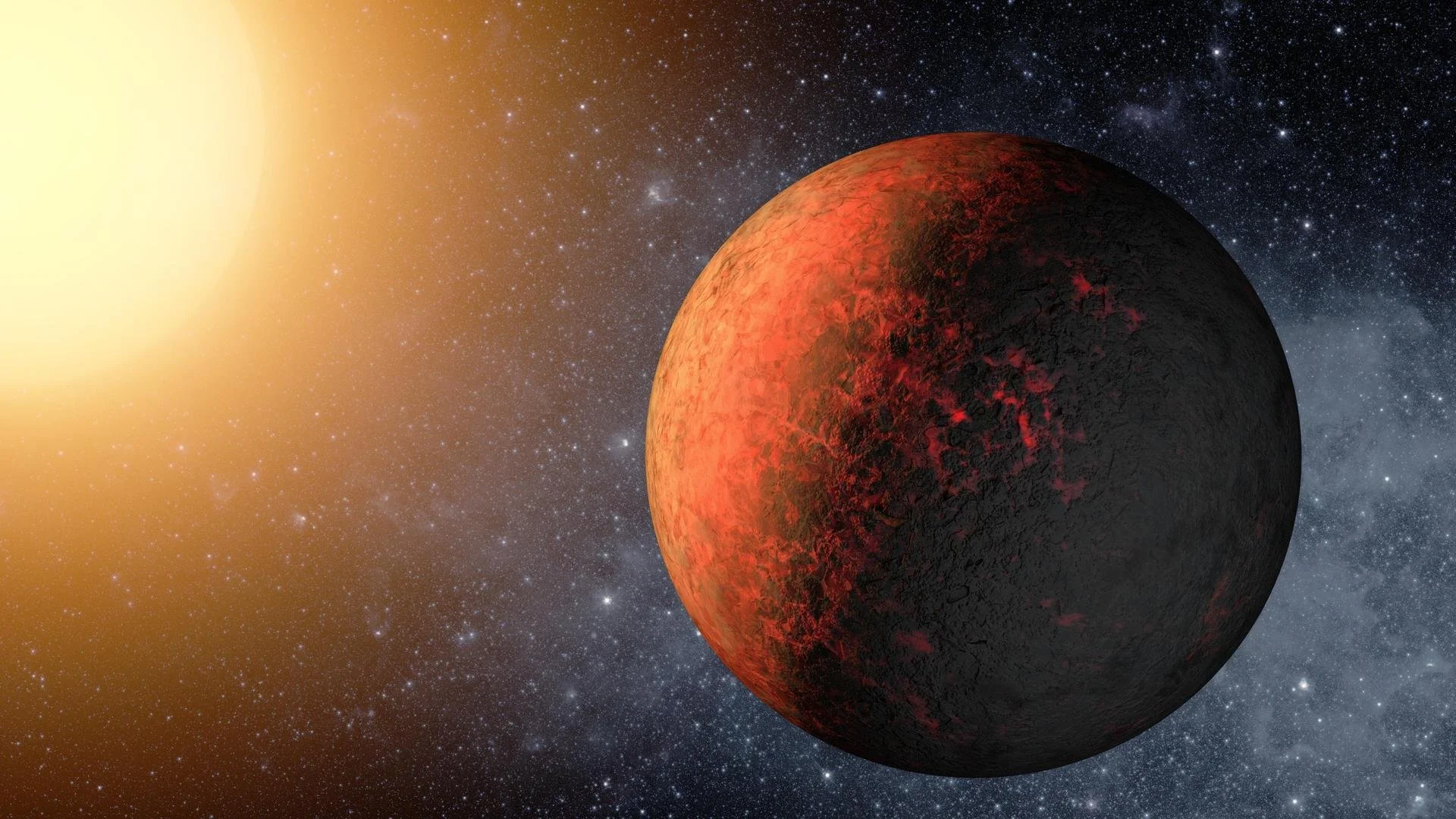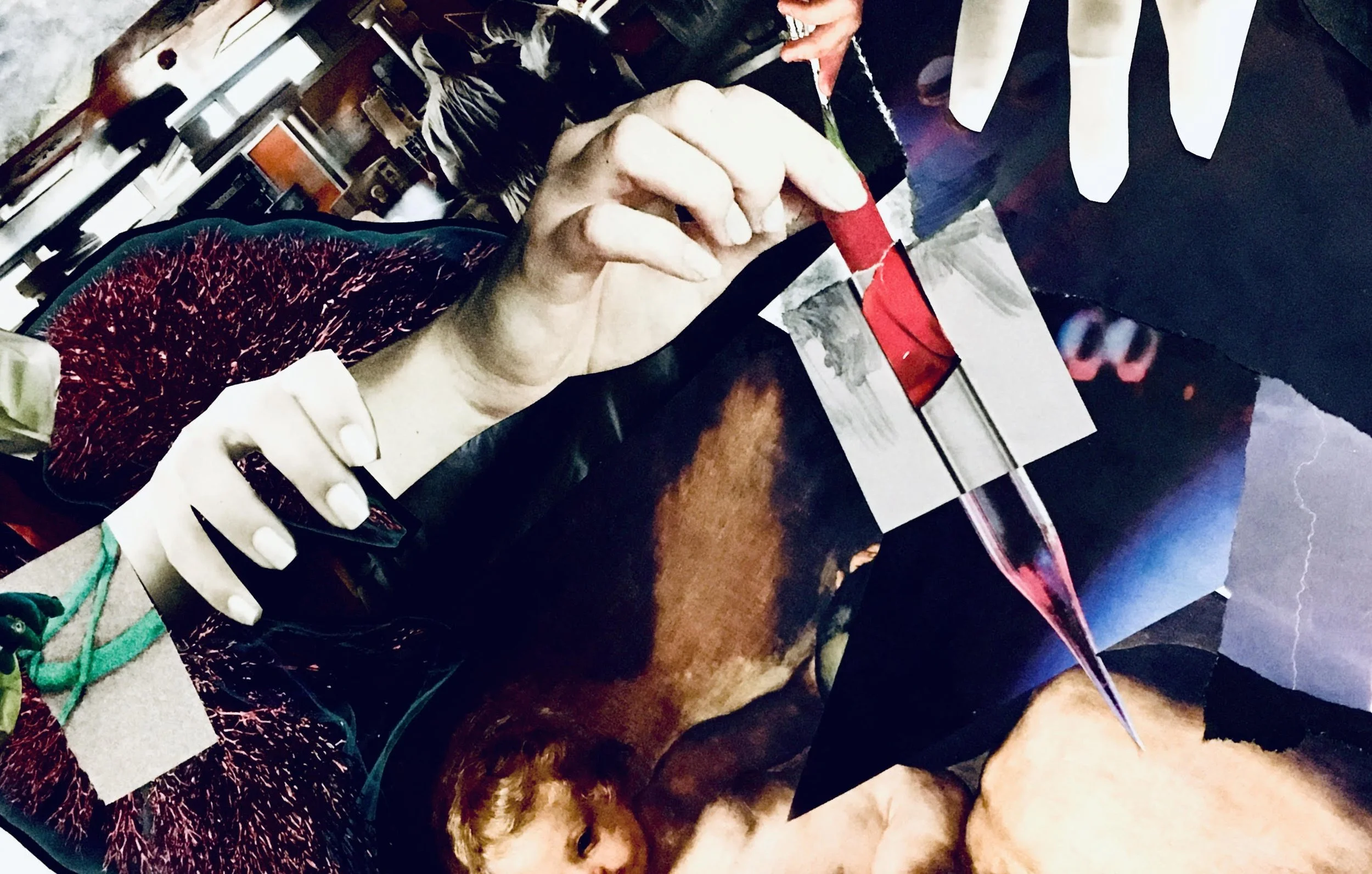Illuminating the Deep Sea’s Living Lights
In a new memoir, marine biologist Edith Widder recounts a career unlocking the mysteries of ocean bioluminescence
Image credit: Tara Holley, using elements from Rawpixel.
by Jade Lin
January 18, 2022
It wasn’t until she reached a depth of 1,831 feet below the ocean’s surface that Edith Widder started to panic. Two days before, she had emerged from her 800-foot test dive in the Wasp deep-sea diving suit, entranced by a display of glowing bioluminescent organisms “like a three-dimensional version of Van Gogh’s Starry Night.” But as Widder reached the bottom, she suddenly became aware of her situation. She had spent 80 minutes descending to the seafloor, and above her lay over 100,000 pounds of water. Should the suit spring a leak, the water would jet in at a pressure high enough to pierce flesh.
Just as fear started to overwhelm her, Widder’s gaze latched onto the rainbow shimmer of a jellyfish swimming by, and she directed her full attention into observing this creature’s delicate beauty. The jellyfish undulated its thimble-shaped bell, gracefully pulling its long tentacles through the water. It quickly disappeared from view, but that brief moment of focus was enough to wrench Widder from the brink of panic and let her continue the mission.
There are a few harrowing moments like this in Widder’s new science-filled memoir, Below the Edge of Darkness. Widder, a pioneering marine biologist, takes readers on a riveting adventure into the depths of the ocean, where life is largely governed by the presence or absence of light. Widder describes fantastical creatures—shrimp spewing luminescent proteins, fish fitted with flashlights, octopuses with lights for suckers—to inspire and inform the next generation of ocean explorers. After all, Widder’s own experience witnessing the fireworks-like display underwater caused her to turn down a “plum” postdoctoral position in neurobiology for the inchoate field of marine bioluminescence.
Widder explains that in the open ocean, where there is a dearth of hiding places, many animals rely on darkness to evade predators. During the day, these animals hang out below “the edge of darkness,” where very little sunlight penetrates through the water. Only when the sun sets, when the intensity of light at the surface dims, do these animals migrate up through the water column to feed. They evolved to use bioluminescence to deal with the unique challenges of finding food, avoiding being eaten, and communicating with others—all while in the dark.
Below the Edge of Darkness: A Memoir of Exploring Light and Life in the Deep Sea, by Edith Widder. Random House, 352 pages, $28.
The natural light of bioluminescence is produced via a chemical reaction when a luciferase enzyme catalyzes a luciferin protein. The vast majority of life in the ocean is bioluminescent, but Widder says that most people are oblivious to this fact. Although marine bioluminescence can be seen with the dark-adjusted human eye, the most accessible sources of bioluminescence in coastal surface waters are drowned out by human lights. This same phenomenon happens even below the surface; when Widder powered the diving suit’s floodlights, she could not find any organisms emitting light—they were all “too small or too transparent” to see.
By following Widder’s career investigating light and life in the ocean, readers come to realize how much science relies on the ways we observe.
“To comprehend the meaning of any animal’s visual signals, it’s essential to put yourself in their shoes—or chelae or flippers,” Widder writes. But how do you tell what their typical day is like when your every movement sets off an explosion of light? The challenges Widder faces attempting to document natural conditions and behaviors hints at a larger question in science: can knowledge based on experiments and studies be translated to the real world?
At times, Widder goes overboard waxing poetic about marine life (“evanescent sprays and swirls and squirts of flashiness glittering in the darkness,” for example). Her flowery language is understandable, however, considering the challenges of explaining in words such wonders and absurdities that should really be seen with one’s own eyes. Yet, Widder succeeds in showcasing her passion and expertise as a scientist who spent decades studying marine bioluminescence. Her explanations are accessible and intuitive, her scenes vivid and exciting. It’s disappointing that Widder did not devote more text to how her expeditions influenced her development as a person rather than as a scientist.
It’s fitting that the book was published in 2021, the first year of the United Nations Decade of Ocean Science for Sustainable Development. The book arrives at a time when investments in our oceans have never been more critical. Assaulted on all sides by climate change, overfishing, pollution, and an endless parade of other anthropogenic impacts, the oceans are in dire need of protection.
Widder argues that refocusing on exploration will help people move past the immobilization of eco-anxiety. Widder’s experience in the diving suit exemplifies the approach she believes we should take: instead of feeling overwhelmed by the ocean of problems we have yet to solve, we should direct our energy toward understanding the marvelous eccentricities of our ocean planet, one jellyfish at a time. Curiosity and wonder are the drivers of human connection to the natural world, and exploration will encourage people to become stewards of the ocean environment.
“We need explorers now more than ever,” Widder asserts. “Explorers are, by necessity, optimists who have to see beyond imagined limits to find a way forward.”
While Widder’s hunger for discovery has allowed her to make pioneering advances in the field of deep-sea ecology, she believes there are still plenty of mysteries for future explorers to unravel. “An awful lot of what we think we know about bioluminescence in the ocean is just guesswork,” Widder reveals. “And yet, what a glorious puzzle to try to solve.”
Jade Lin
Jade Lin is an early career writer currently based in Brookline, Massachusetts. She is pursuing a master's degree in science writing from Johns Hopkins University and is an avid fan of all things marine. When she is not writing, you can find her enjoying Asian media and webnovels.



